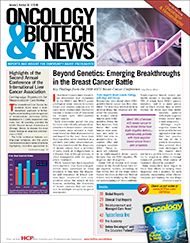More Elderly Patients Up-to-Date on Colorectal Cancer Screening
Based on data from the National Health Interview Surveys of 2000-2005, researchers from the Centers for Disease Control and Prevention noted a promising trend: nearly half of elderly individuals were up to date on the recommended number of screenings of colorectal cancer.
Click here to view as PDF.
Based on data from the National Health Interview Surveys of 2000-2005, researchers from the Centers for Disease Control and Prevention noted a promising trend: nearly half of elderly individuals were up to date on the recommended number of screenings of colorectal cancer.
For each year in the 5-year span, 5000 to 6000 patients reported on their frequency of undergoing colonoscopy and sigmoidoscopy or completing home fecal occult blood tests. According to researchers, the 5-year trend indicated a 19% increase in the number of patients reporting that they were up-to-date on colorectal cancer screening. In addition, nearly two-thirds of individuals who reported a family history of colorectal cancer had undergone testing as recommended in screening guidelines.
Elderly patients without health insurance and those who had no primary care provider reported having the fewest tests. The youngest elderly respondents had the highest screening rates, and the rate dropped as patients increased in age.
Perhaps most importantly, the study observed that the profile of the most frequent method of testing changed from 2000 to 2005. In 2000-2004, fecal occult blood testing dominated colorectal cancer screening, whereas colonoscopy accounted for the majority of colorectal screens performed in 2005. Investigators remarked that Medicare’s 2001 decision to approve reimbursement for colonoscopies likely had a strong positive effect in driving colorectal cancer screening.
Chen X, White MC, Peipins LA, et al. Increase in screening for colorectal cancer in older Americans: Results from a national survey.
2008;56:1511-1516.
J Am Geriatr Soc.




